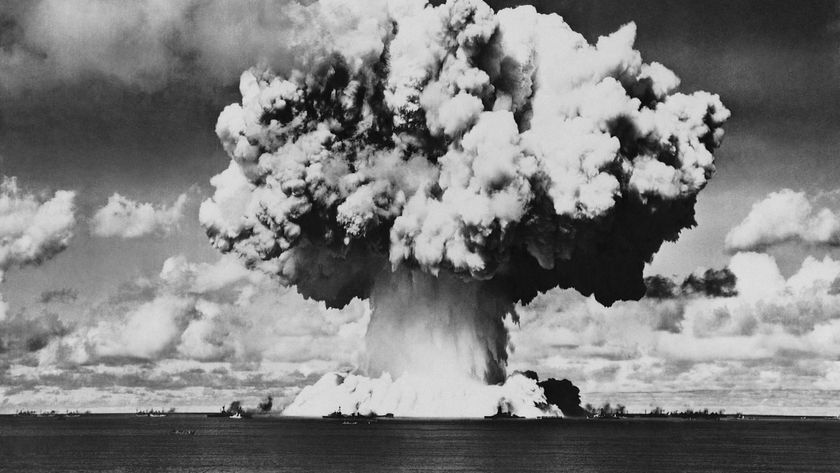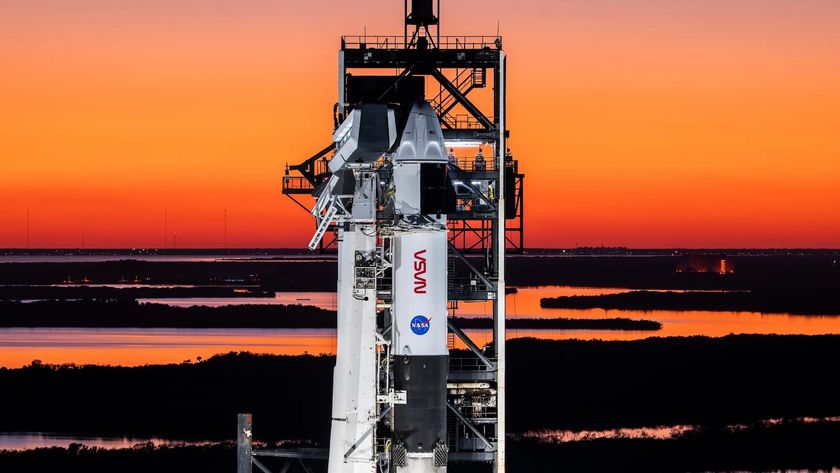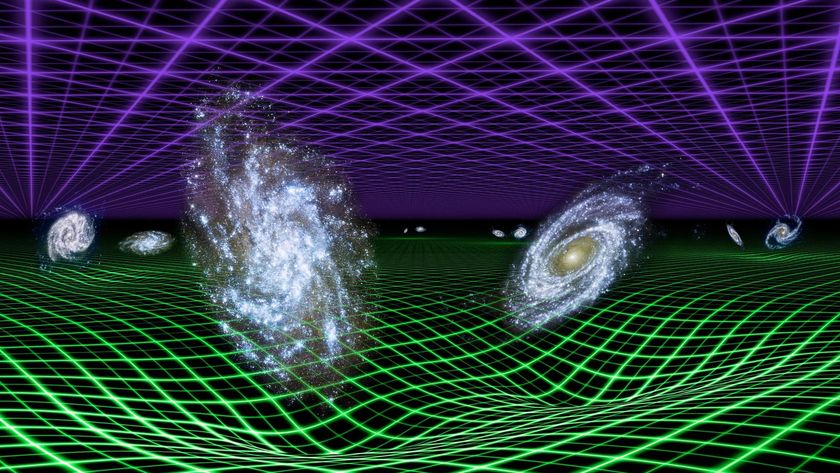
Video Captures Amazing Greenland Glacier Crackup

A deafening rumble alerted two scientists to an amazing sight: the collapse of one of Greenland's biggest and fastest-moving glaciers.
And because the scientists were already in place with a time-lapse camera, they were able to capture the calving event — one of the biggest of these glacier collapses ever recorded on film.
Before the collapse, Timothy James, a researcher at Swansea University in the United Kingdom, was in southeastern Greenland in July 2010 to set up a remote camera to spy on Helheim Glacier where it meets the sea. This meeting of glacier and ocean is called the calving front, and marks the zone where icebergs break off (or calve).
"This is an area that is very difficult to measure because [it is] so dynamic and unstable," James said in an email interview. By using time-lapse photography, James and his colleagues hope to better understand changes at the calving front, and the factors that control how glaciers and ice sheets change over time, especially in response to climate.
"While providing important information about these events to scientists, we are hoping that our video will help people understand the scale of these calving events," James told OurAmazingPlanet. [Watch the Helheim Glacier collapse]
Since 2001, Helheim Glacier has thinned by more than 130 feet (40 meters) and beat a hasty retreat, shrinking landward by more than 5 miles (8 kilometers).
Right place, right time
Sign up for the Live Science daily newsletter now
Get the world’s most fascinating discoveries delivered straight to your inbox.
During the July 2010 calving event, about 0.4 cubic miles (1.5 cubic km) of ice — which would fill Central Park to a height of almost 1,000 feet (300 m), James calculated — crumbled off the glacier in 15 minutes.
"Even this, in the context of the ocean, isn't very much water, but there are thousands of glaciers like this around the world," James noted. "This is how glaciers influence sea level. [However], it is important for people to understand that an individual calving event is not evidence of climate change. Large glaciers produce icebergs of this magnitude all the time. What's important is how the size and frequency of these events change over time and what causes them to occur," James said.
In summer 2010, James and Swansea colleague Nick Selmes had been dropped off by helicopter in Helheim Fjord to install cameras that would take digital photographs of the calving front every hour until the researchers picked up the cameras in autumn.
"After six days, we had installed two cameras that were running nicely, and we were installing the third camera when, out of nowhere, we heard this really deep rumble that was shooting down the fjord," James told OurAmazingPlanet.
Boom, then bleep
"The first thing we saw was the ice breaking off cross the fjord — we were quite excited about that," James said. "As this progressed, my colleague, Nick Selmes, thought he could see a crack forming along the whole width of the glacier. Indeed, there was! So I turned the camera, and we watched in awe. It was absolutely amazing and something I will never forget. There was so much noise we could hardly hear each other.
“This calving event was absolutely huge, and we were so excited,” he added. “In retrospect, I'm glad we didn't have audio because there was a lot of shouting and quite a lot of swearing, if memory serves," James said.
The massive crack across Helheim Glacier was approximately 13,000 feet (4,000 m) long. And much of the giant glacier's height is hidden underwater, so about 2,600 vertical feet (800 m) of ice crashed into the water — much more than the 325 feet (100 m) visible in the film. The falling ice created a giant wave.
"There is a huge face of ice that has to push through a lot of water," James said. "The time-lapse gives the impression that the calving event happened quite quickly, but it was really surprising how slow it was."
Email Becky Oskin or follow her @beckyoskin. Follow us @OAPlanet, Facebook & Google+. Original article on LiveScience's OurAmazingPlanet.












